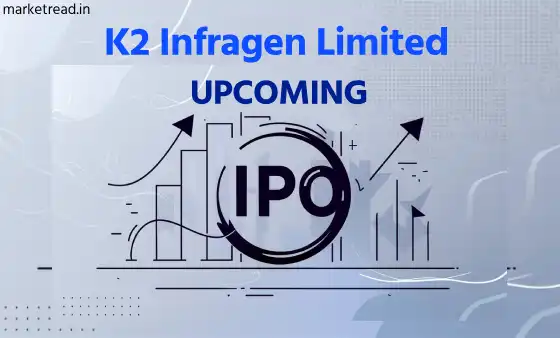Crizac Limited’s IPO will be available for sale from July 2, 2025, to July 4, 2025. A new IPO is often seen as an investment opportunity. Is Crizac IPO good or bad? Should one invest? Such questions arise among general investors. To address this, I have provided a brief yet essential review of Crizac Limited’s business model and financial performance in the following article. In this article, we will cover all aspects, from the company’s business model to its financial performance.
Table of Contents
Company Introduction and Business Model
Crizac Limited is an EdTech platform operating in the international education sector. It connects educational institutions and education consultants (agents) through its B2B (business-to-business) education platform. Through this platform, foreign universities and colleges can recruit Indian and global students more efficiently.
The company’s main markets are the United Kingdom (UK), Canada, Australia, New Zealand, and Ireland. Crizac also provides various services to universities, such as brand management, marketing, and managing admissions offices.
Crizac was founded in 2011 and is headquartered in Kolkata, India. Besides its strong presence in India, the company has a significant base in London (UK). It has also appointed advisors and representatives in countries like Cameroon, China, Ghana, Kenya, etc. This strong global presence allows Crizac to serve students from local to distant educational institutions.
The company has achieved significant performance to date. In the past three financial years (FY23-FY25), Crizac has processed over 711,000 student applications. During the same period, Crizac has partnered with 173 international higher education institutions.
Many of these partner institutions are prestigious universities in the UK (e.g., University of Birmingham, University of Surrey, etc.). Due to a decade of collaboration, these institutions have strong trust in Crizac. Crizac has approximately 10,362 registered agents spread across over 75 countries, of which 3,948 agents were active in FY2025.
Among these active agents, 2,237 operate in India, while the remaining 1,700 are based in 39 countries, including the UK, Nigeria, Pakistan, Bangladesh, Nepal, Sri Lanka, Cameroon, Ghana, Kenya, Vietnam, Canada, Egypt, etc. Through this extensive agent network, the company helps students from remote areas pursue higher education abroad.
One of the company’s key strengths is its proprietary technology platform. This digital platform facilitates real-time collaboration between agents and educational institutions. It enables tracking of application status, exchange of necessary documents and information, and data-driven decision-making. With this technological facility, Crizac can handle a large number of applications with minimal manpower.
Currently, the company has only around 310 employees and still manages millions of applications. This technology has made operations scalable, saving both time and costs.
Use of Funds Raised Through IPO
Crizac aims to raise approximately ₹860 crore through its IPO. This issue is entirely an Offer for Sale (OFS), meaning no new shares will be created. The company’s promoters and existing shareholders will sell some of their shares to raise this amount. The objective of this IPO is to gain the benefits of stock market listing, increase brand visibility, and provide some returns to the promoters. Since OFS does not provide direct capital to the company, the entire amount will go to the selling shareholders.
Industry Overview and Opportunities
Globally, the demand for international education is rapidly increasing. The global education market size was approximately $6 trillion in 2024 and is expected to grow to around $7.4 trillion by 2030. Students increasingly aspire to pursue quality higher education and international exposure abroad, driving this demand amid growing globalization.
India is a leading country in this changing landscape. Indian students are increasingly opting for foreign education. In 2023, approximately 1.3 to 1.5 million Indian students were pursuing higher education abroad. This number is steadily growing and is expected to reach around 2.5 million students by 2030. Thus, in the coming decade, India will become a major source country for international students.
Globally, the number of students enrolling in higher education has increased significantly. For example, in 1970, around 33 million students worldwide were pursuing higher education, which grew to over 254 million by 2022. This growth is particularly high in emerging economies where the middle class seeks advancement through education.
It is estimated that in the future, Asia and Africa will generate the highest demand for international education. Between 2060-2070, approximately 80% of the global population will reside in these two continents, which could significantly increase the number of students going abroad for education from these regions. Overall, the long-term outlook for the global education sector appears positive. Since Crizac operates in this growing trend, the company is likely to benefit in the future.
Financial Performance: Solid and Consistent
Crizac’s financial results have been strong in recent years. The following table provides key financial indicators of the company for FY2023 to FY2025:
| Financial Parameter | Fiscal 2025 (Consolidated) | Fiscal 2024 (Consolidated) | Fiscal 2023 (Standalone) |
|---|---|---|---|
| Revenue from Operations (₹ Cr) | 849.49 | 634.86 | 472.97 |
| EBITDA (₹ Cr) | 212.82 | 72.64 | 107.29 |
| EBITDA Margin (%) | 25.05 | 11.44 | 22.68 |
| PAT – Profit After Tax (₹ Cr) | 152.93 | 118.90 | 112.13 |
| PAT Margin (%) | 17.28 | 15.57 | 21.65 |
| Return on Equity (RoE, %) | 30.24 | 34.79 | 50.66 |
Based on the above data, here are some key observations:
- Strong Revenue Growth: Crizac’s revenue has shown consistent growth, from ₹472.97 crore in FY2023 to ₹634.86 crore in FY2024 and ₹849.49 crore in FY2025. This nearly doubling of revenue within two years reflects the company’s business expansion, achieved through increased service demand and entry into new markets. Notably, this revenue comes entirely from service sales (the company does not sell products), with approximately 95% of this revenue originating from the UK market.
- Profit and Margins: The company’s PAT has also increased, from ₹112 crore in FY2023 to ₹152.9 crore in FY2025. Although there was a slight dip to ₹118.9 crore in FY2024, profit rebounded in FY2025 as revenue growth outpaced expense growth. Consequently, the PAT margin improved from 16% in FY2024 to 18% in FY2025. The PAT margin was approximately 22% in FY2023.
- EBITDA and Operational Efficiency: Crizac’s EBITDA, an indicator of operating profit before interest, tax, depreciation, and amortization, was ₹107.3 crore in FY2023. Due to rising service costs, it dipped slightly in FY2024 but nearly tripled to ₹212.8 crore in FY2025 after the company controlled expenses and improved operational efficiency. The 25% EBITDA margin in FY2025 demonstrates successful cost structure optimization.
- Return on Equity (RoE): RoE was over 50% in FY2023 but declined to 30% in FY2025. This may initially seem concerning, but the key reason is the increase in the company’s equity base. In November 2023, Crizac acquired Crizac UK, a foreign entity, which increased the company’s net worth. From FY2024 onwards, Crizac’s financials are presented on a consolidated basis. Despite the decline, the company maintained a high 30% RoE, indicating healthy shareholder returns.
Note: Until FY2023, Crizac’s financials were for standalone operations, but after the acquisition in November 2023, FY2024 and FY2025 results are consolidated, possibly affecting year-on-year comparisons.
Overall, Crizac has demonstrated a strong financial position. With growing revenue and profitability, both the company’s top line and bottom line are improving. Such growth is considered attractive in an IPO. Importantly, Crizac is a profitability-driven company growing without external funding, indicating a stable and sustainable business model.
Crizac’s Business Strengths: Why Investors Are Interested
- Strong Global Institutional Partnerships: Crizac has established long-term relationships with prestigious universities and higher education institutions worldwide. Its network includes 173 partner institutions in countries like the UK, Ireland, Canada, and the USA, with many being partners for over five years. Recurring student recruitment from these institutions ensures business stability and brand credibility for Crizac.
- Extensive Global Agent Network: Crizac has over 10,000 registered agents across 75+ countries. Nearly 4,000 active agents facilitated student applications in FY2025. This strong agent base gives Crizac a competitive advantage, as building such a vast, trusted network is challenging for new entrants. These long-term partnerships help Crizac reach quality students globally.
- Proprietary Technology Platform: Crizac’s proprietary platform is a core strength, connecting agents and institutions. It facilitates application tracking, document exchange, and communication. Automation reduces errors and increases speed, while data analytics help institutions select suitable students and understand market trends. This tech-driven system enables the company to handle large-scale operations cost-effectively, directly benefiting profit margins.
- Strong Operational Efficiency and Financial Performance: Crizac’s RoE has surpassed larger companies like IndiaMart and IDP Education. Despite being smaller in size, Crizac offers higher shareholder returns, reflecting operational efficiency. In FY2025, Crizac’s RoE was 30%, compared to IndiaMart’s 24-25% and IDP Education’s 25%. Its asset-light model drives higher asset turnover and working capital efficiency, demonstrating value creation at a small scale.
- Market Leadership in Focused Regions: Crizac primarily serves higher education institutions in the UK and other developed markets. Though this market concentration poses risks (discussed below), it allows Crizac to establish deep market penetration. Crizac has become a trusted partner for many UK institutions, benefiting from a first-mover advantage against potential competitors.
Potential Red Flags: Risks You Can’t Ignore
- High Revenue Concentration: Over 95% of Crizac’s revenue comes from institutions in the UK and nearby regions. This dependence on a single region poses revenue concentration risk. Any policy changes, economic crises, political shifts, or adverse events in these countries could significantly impact Crizac’s business.
- Revenue Recognition and Return Uncertainty: Crizac’s commission-based revenue depends on student enrollment and continued study at partner institutions. If students drop out, universities may reclaim part of the commission paid to Crizac, creating revenue uncertainty and potential commission clawbacks. Varied terms and conditions across partner institutions further contribute to this uncertainty.
- Regulatory and Visa Risks: Crizac’s operations depend heavily on international student mobility. Tighter visa rules or policy changes in key markets like the UK, Canada, and the USA could reduce foreign student numbers. For example, changes in Indian student visa policies in the UK or Canada would directly lower client institutions’ recruitment targets, impacting Crizac’s business.
- Forex Risks: A significant portion of Crizac’s revenue comes in foreign currency (mainly GBP, CAD, etc.). Fluctuations in exchange rates against the Indian Rupee can affect reported revenue and profitability. While the company may have hedging mechanisms, currency volatility remains an external risk.
- Institutions Developing In-house Recruitment: The services Crizac provides, namely international student recruitment, can be developed in-house by universities to some extent. If partner institutions strengthen internal recruitment/marketing teams, their dependence on Crizac could reduce. Also, any negative publicity or reputation issues with partner institutions could indirectly impact Crizac’s brand and business.
- Seasonal Business Cycles: International student admissions follow seasonal patterns, typically peaking in January, May/June, and September. Crizac’s commission revenue is linked to these cycles, causing fluctuations in quarterly revenue and profits. Investors must consider these seasonal variations.
Comparison with Similar Companies
Although there are no exact listed peers, IndiaMart Intermesh Limited and IDP Education Limited share some similarities with Crizac. Based on available data:
- Business Size: IndiaMart’s FY2025 revenue was ₹1,388 crore, significantly larger than Crizac’s ₹849 crore, though operational models differ. IDP Education’s annual revenue converted to INR falls in the ₹100-150 crore range due to its distinct business model and market geography.
- Shareholder Returns: Crizac’s RoE of 30% exceeds both IndiaMart and IDP, indicating efficient capital utilization and strong shareholder returns.
- EPS and Valuation: Crizac’s FY2025 EPS was ₹8.74, IndiaMart’s was over ₹90, and IDP’s was under ₹1. Crizac’s IPO price is set at approximately 28x P/E based on FY25 EPS, reasonable compared to IndiaMart’s 30x P/E.
In short, though Crizac is smaller, its growth rate and return potential surpass many larger competitors. However, due to differing business models, this comparison is only indicative.
Crizac IPO Details and Key Dates
| Crizac IPO | Details |
|---|---|
| IPO Bidding Period | July 2, 2025, to July 4, 2025. |
| Issue Size | ₹860 crore, offering 3.51 crore shares, entirely OFS. |
| Price Band | ₹233–₹245 per share |
| Lot Size | 61 shares (costing ₹14,945 at upper band) |
| Listing Date | July 9, 2025, on NSE & BSE |
| Allotment and Listing | Share allotment on July 7, 2025, refunds on July 8, and listing on NSE and BSE on July 9, 2025. |
| Anchor Investors | ₹258 crore worth of shares allotted to anchor investors like Allianz Global Investors, Societe Generale, and Bandhan Mutual Fund at ₹245 per share, reflecting institutional confidence. |
| Category-wise Allocation | 50% for QIBs, 15% for HNIs/NIIs, and at least 35% for retail investors. |
Grey Market Premium (GMP) indicated unlisted Crizac shares trading ₹20-25 above the issue price, suggesting an expected 8-10% listing gain. However, GMP is informal and not a guarantee of listing performance.
Conclusion
In conclusion, Crizac’s fundamentals are strong. Growing global education demand, a robust tech platform, a strong agent-university network, and solid financial performance position the company well. The company has achieved impressive growth in both revenue and profitability within a short period. Its scalable network and technology are likely to sustain this growth.
However, investors must also consider challenges and risks, such as geographical revenue concentration, policy risks, and regulatory uncertainties. While IPO valuation is reasonable, it is not cheap, and Crizac must continue to perform well to meet short- and long-term growth expectations.
Investor Advice: Conduct independent analysis and consult a financial advisor before investing. While past performance is promising, assess future growth potential and risks. If you believe in the bright future of global education and acknowledge the above possibilities, Crizac is a well-positioned platform. However, all investments carry risks, and short-term extraordinary gains are not guaranteed. Thus, a medium- to long-term perspective is advisable for this IPO.
Disclaimer: The above information is for educational purposes only and should not be considered investment advice. While the data is based on reliable sources, errors may exist. Stock market investments are subject to risk, and past performance is not indicative of future results. Please conduct your own research, consult certified financial advisors, and read official documents carefully before investing. The author or publisher is not responsible for any potential financial loss.




